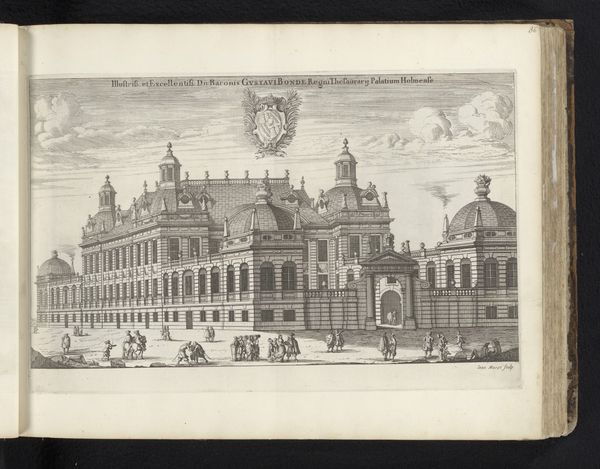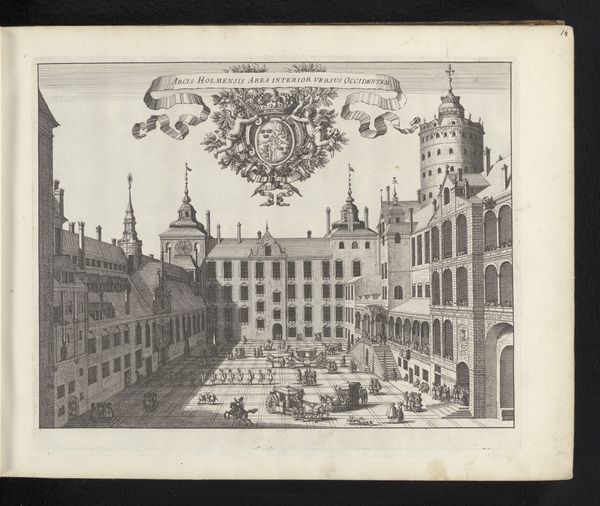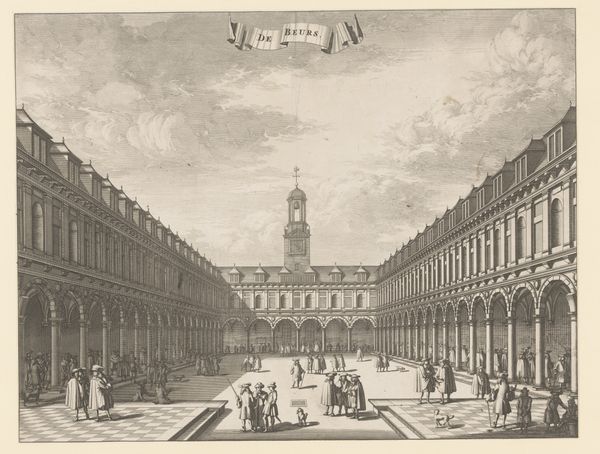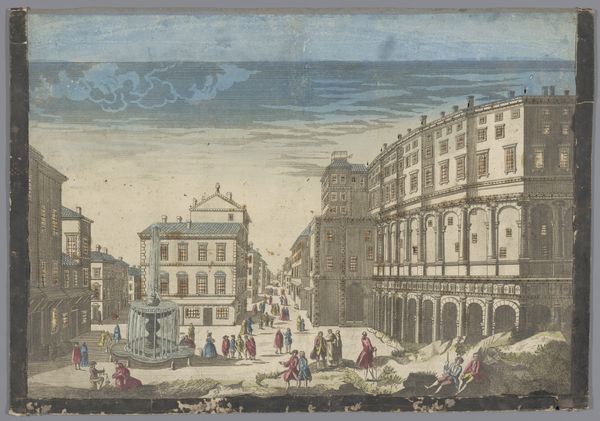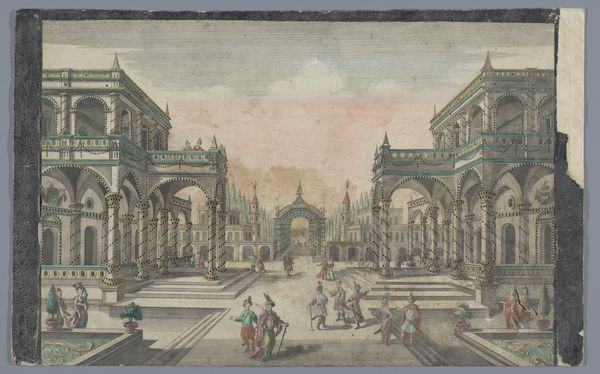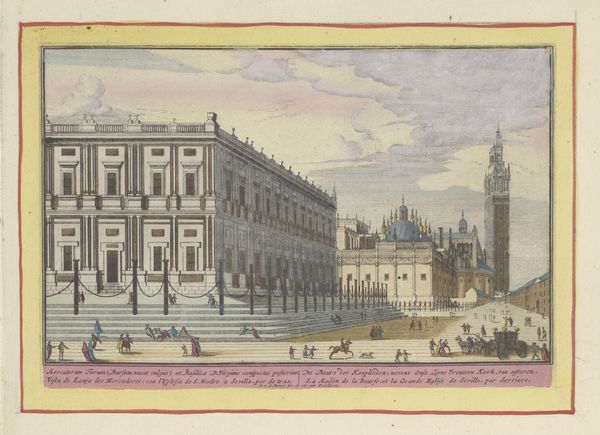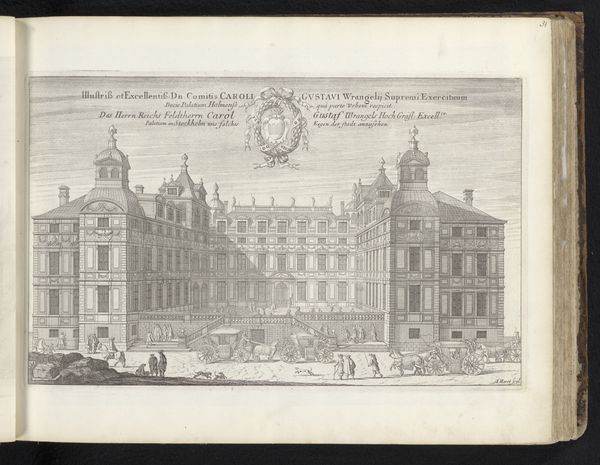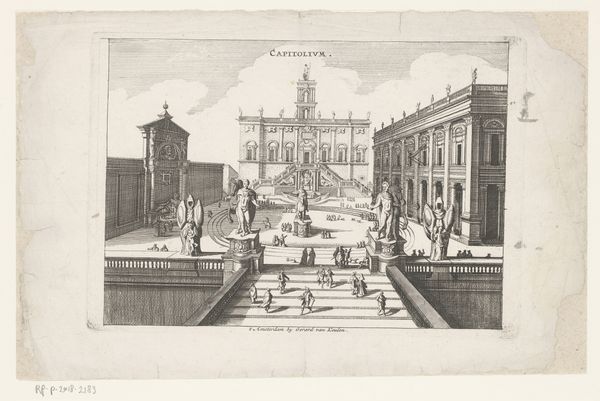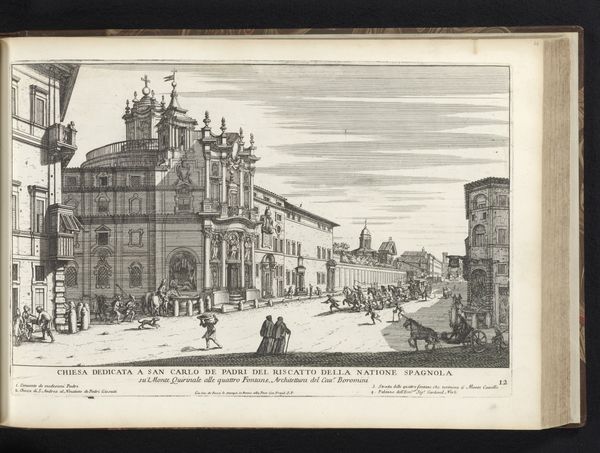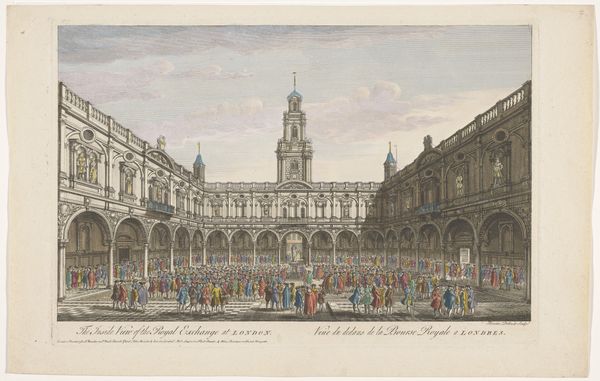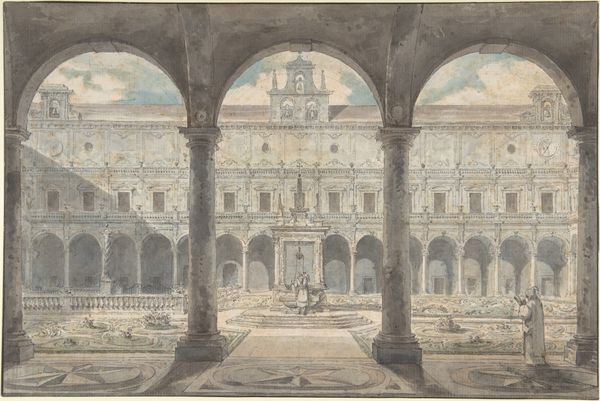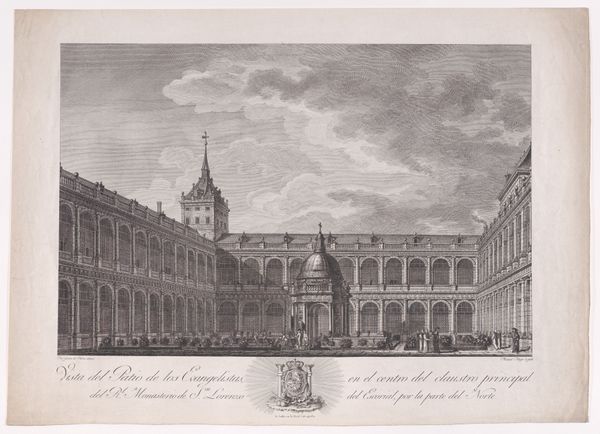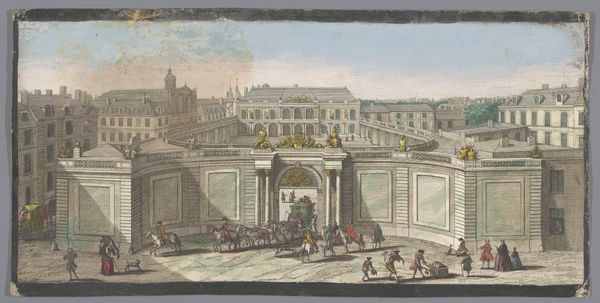
print, engraving, architecture
#
baroque
# print
#
perspective
#
cityscape
#
engraving
#
architecture
Dimensions: height 314 mm, width 435 mm
Copyright: Rijks Museum: Open Domain
Editor: This print from the 18th century, titled "Gezicht op de binnenplaats van een bouwwerk," or "View of the Courtyard of a Building" presents us with an intricate architectural scene. It is a baroque-style engraving and evokes a sense of grand design and imagined space. I’m curious to learn more about it, what's your take on this piece? Curator: This print gives us insight into the intersection of art, architecture, and theater of the time. The print medium itself suggests it was designed for broader circulation. This wasn't just about admiring a building; it was about disseminating ideas about architectural grandeur and control of space. Notice the theatrical setting indicated by the inscription? Editor: Yes, it mentions the design representing "un Theatre serem." Curator: Exactly. Architectural prints like these were used as visual tools to construct ideas about power. This courtyard, though likely fictional, presented a model for how rulers and institutions could shape public perception through monumental spaces. It’s Baroque grandeur as propaganda. Do you see how perspective is employed to enhance this effect? Editor: Absolutely, the converging lines amplify the building's imposing presence and seemingly endless depth, but I didn't connect it to power... I see what you mean! So, it’s less about accuracy and more about conveying authority? Curator: Precisely! It catered to a culture keen on spectacle, eager to be awed. Think about the social function of museums today and how they reflect certain values and priorities – this print operated similarly in its time. Editor: Fascinating! I had looked at the aesthetics, but hadn't considered the intent to impress upon viewers a message of social control through architectural design. Curator: Considering these aspects adds another layer to the experience. Hopefully, our listeners will also be able to think critically about the images they encounter.
Comments
No comments
Be the first to comment and join the conversation on the ultimate creative platform.
